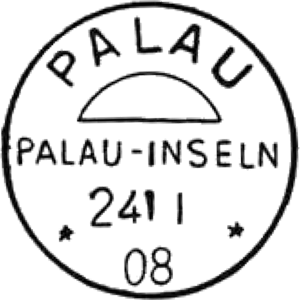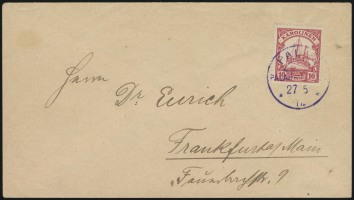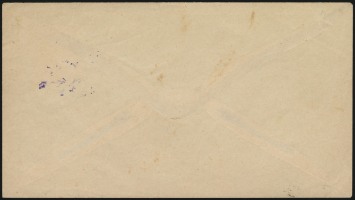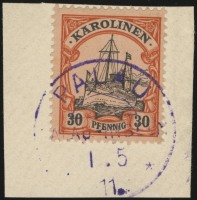Palau
Following Spain’s 1898 defeat in the Spanish-American War, it sold its remaining Pacific possessions, including the Palau Islands, to Germany.
In 1907, rich deposits of phosphates were discovered on the island of Angaur in the Palau Island chain of the western Carolines, leading to increased German development within the Palau Islands. On 4 October 1907, a German post office was opened in Palau, which was the largest settlement in the Palau Islands and a coaling station for the German Navy.
With the outbreak of World War I, steamship traffic to and from Palau was significantly disrupted. The last known mail departure from Palau was in early August 1914. Palau was occupied by Japanese forces on 8 October 1914, forcing the closure of the German post office.
Postmark Information
Catalog:
- Friedemann 2
- ArGe Kolonien PALAU PALAU-INSELN
Dates of Use:
- 4 October 1907 to August 1914
Notes:
-
Violet and black inks used contemporaneously, 1910-1914


Palau
PO Information
Opened: 4 October 1907
Closed: 8 October 1914
Following Spain’s 1898 defeat in the Spanish-American War, it sold its remaining Pacific possessions, including the Palau Islands, to Germany.
In 1907, rich deposits of phosphates were discovered on the island of Angaur in the Palau Island chain of the western Carolines, leading to increased German development within the Palau Islands. On 4 October 1907, a German post office was opened in Palau, which was the largest settlement in the Palau Islands and a coaling station for the German Navy.
With the outbreak of World War I, steamship traffic to and from Palau was significantly disrupted. The last known mail departure from Palau was in early August 1914. Palau was occupied by Japanese forces on 8 October 1914, forcing the closure of the German post office.

Postmark Information
Catalog:
- Friedemann 2
- ArGe Kolonien PALAU PALAU-INSELN
Dates of Use:
- 4 October 1907 to August 1914
Notes:
-
Violet and black inks used contemporaneously, 1910-1914
Album Page(s)





